Have you heard of double drenching? According to experts, this is the new paint trend to confidently combine color in your home
Feeling bored of color drenching? Look to this new approach that doubles down on a singular wash of paint
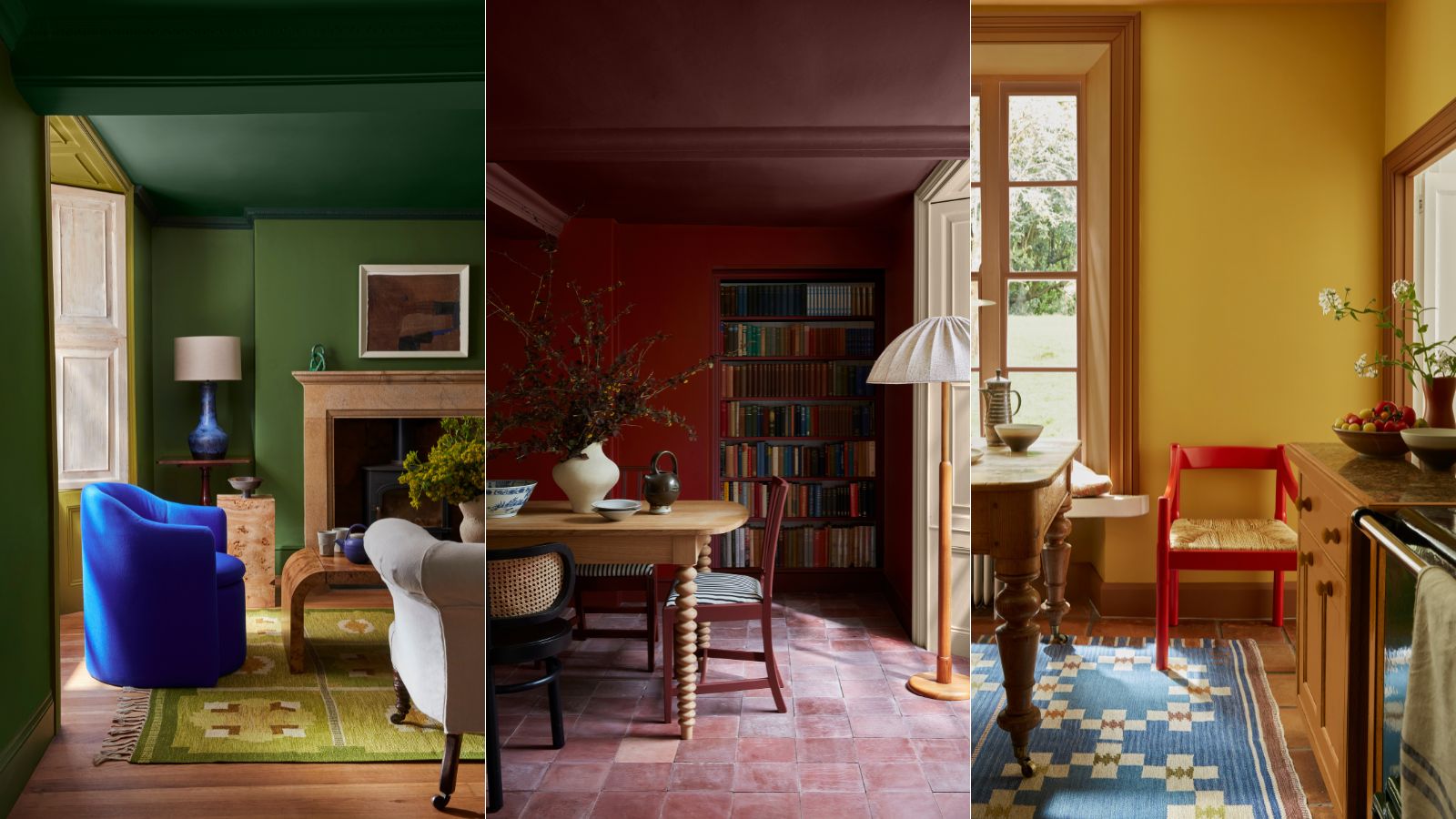

For some, embracing new color trends in your home is quite a bold step. Take color drenching, for example. A fairly new buzzy term in interiors (although, not actually a new concept), the application of drenching a space in all-in-one color is certainly not for the faint-hearted.
So when we caught wind of a new paint trend from the color experts at Little Greene – aptly named as 'double drenching' – we were suitably intrigued.
Here, we break down this hot new take that evolves the color drenching trend and doubles down – and why you'll want to consider this room color idea for your next makeover.
What Is Double Drenching?
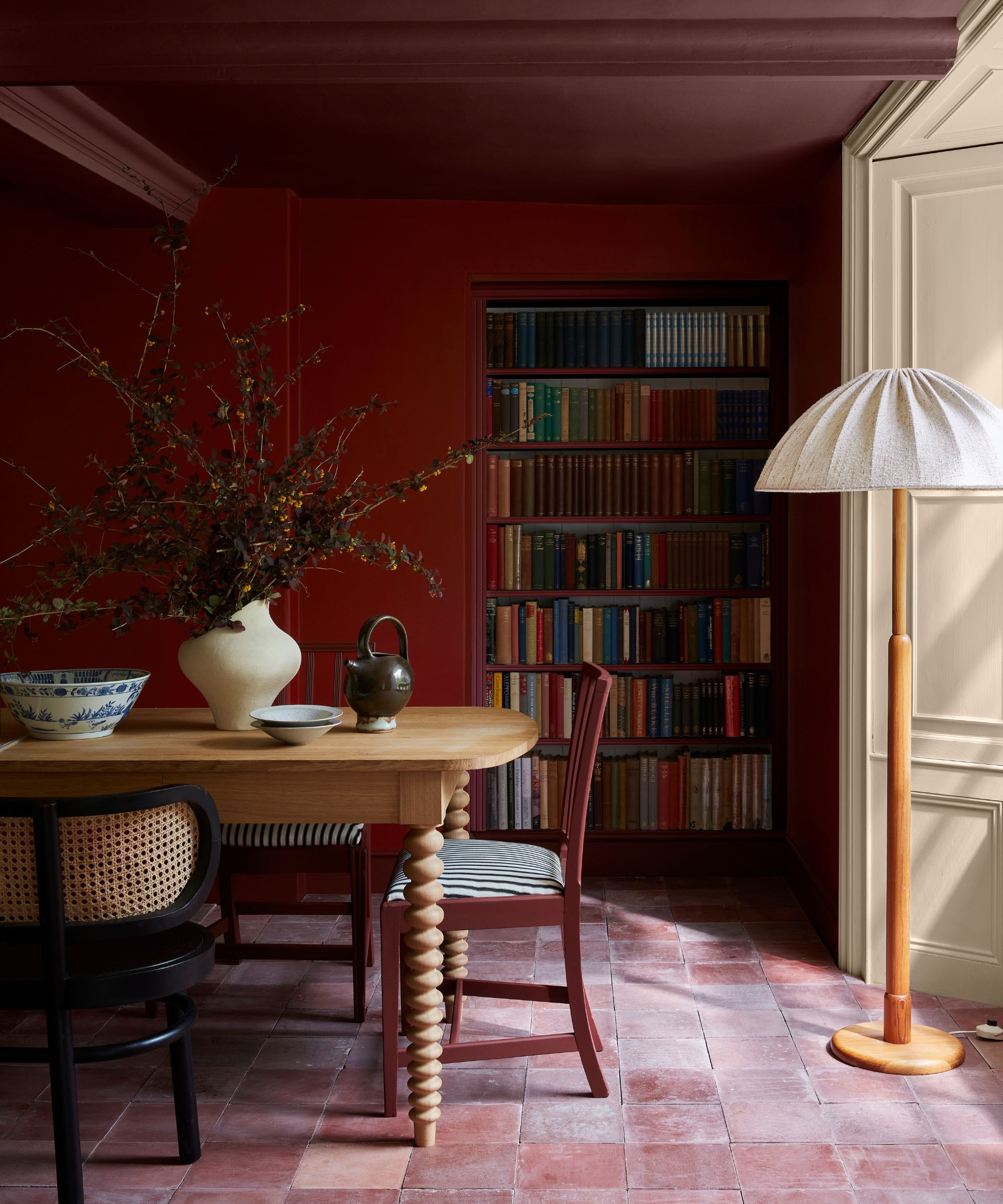
If color drenching is the art of washing a singular color across all walls, the ceiling, your woodwork and decorative molding then it makes perfect sense for double drenching to, of course, refer to two colors.
A confident way of working with color that goes beyond the traditional white ceiling paint idea and painted walls; double drenching is a term that the team at eco-friendly paint brand Little Greene have given to the 'dramatic transformation of a space by painting two or more related colors on all available surfaces to achieve an even more accomplished "wow factor" in a room.'
Simply put, you take two harmonious tones and use them to drench your space in a wash of cocooning color.
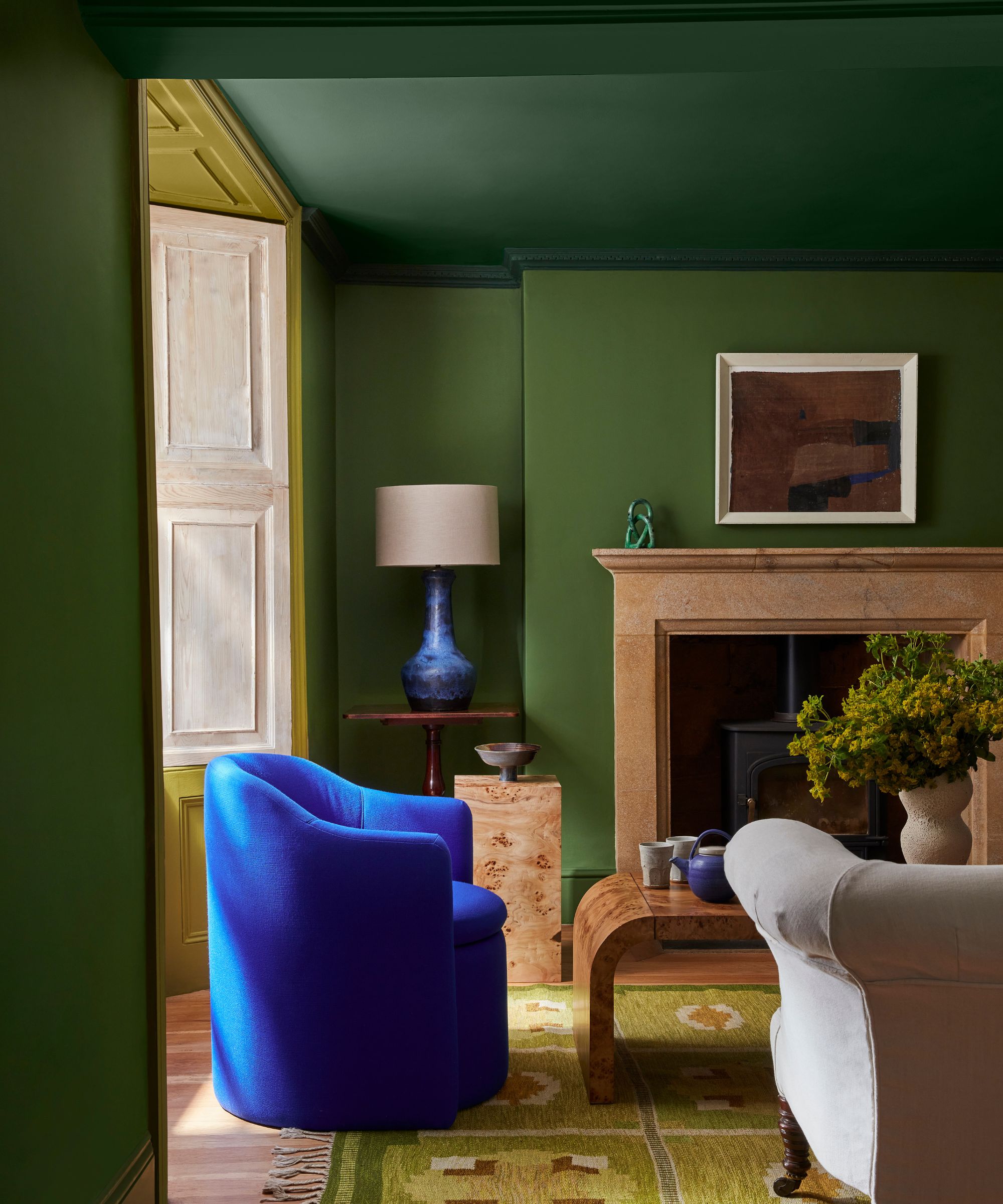
Harmony being the key word. With double drenching, the approach is to confidently combine colors that you might not typically place together in a singular scheme. Traditionally, as Little Greene explain, tonal variations are used to achieve a harmonious look – for example decorating with neutrals in three strengths across the walls, woodwork, and ceiling.
Sign up to the Homes & Gardens newsletter
Design expertise in your inbox – from inspiring decorating ideas and beautiful celebrity homes to practical gardening advice and shopping round-ups.
Instead, you want to look to an analogous color scheme and use colors that sit near or next to one another on the color wheel. 'Greens at different ends of the spectrum, such as a bluish green used alongside a yellowish green on different planes within a space, for example.'
'Because these double drenched schemes are built on strong shades, they offer the chance to embrace a stronger palette in other elements of the room, like adding an unexpected feature color on furniture, upholstery and accessories,' they explain. 'This style of decorating is all about embracing the power of color, so there is no room for white ceiling ideas here!'

'It’s always fascinating to see how color confidence and the use of color changes over time,' says Little Greene's creative director Ruth Mottershead. 'The understanding of the effect of color on the atmosphere of a space is something that has grown exponentially over the past few years.'
'Since first introducing the color drenching approach back in 2021, we have seen customers move away from traditional schemes to embrace deep and mid-tone hues from floor to ceiling and everything in between, creating really engaging, inviting spaces,' she continues. 'Double drenching is an expansion of this color confidence, taking the concept into a highly creative, sophisticated and nuanced approach to decorating.'
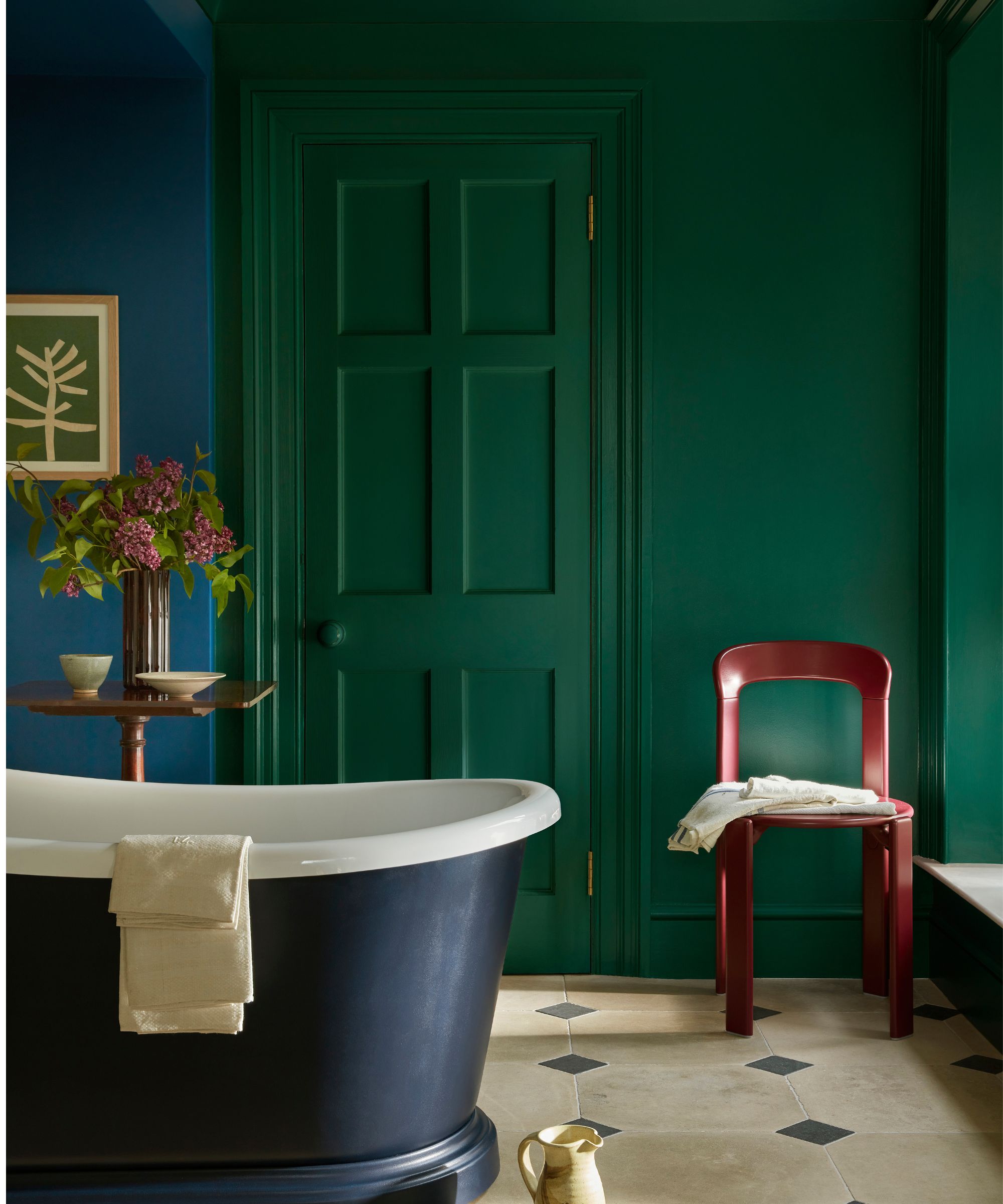
With the easiest and most effective approach being to paint your walls in one tone and then drench the ceiling in an another, there are a few other unexpected color combinations you can try here.
Take the bold bathroom paint idea seen above. The room is divided in two by a ceiling beam, so they have cleverly selected two complementary colors, a timeless deep green and blue, to signify a break in the scheme and create a transition between the two connecting spaces.
It all depends on what feature of the space you want to pull out as your accent. The ceiling, window frames, decorative trims, baseboards, flooring or even furniture and built-ins are all perfect elements to use for your secondary color to create a statement.
There are countless combinations to work with, from the moody side of the palette to soft neutrals and the color of the year: buttery yellow, double drenching provides a new, joyful approach to paint. We're excited to see how designers and homeowners embrace this confident use of color.

Charlotte is the style and trends editor at Homes and Gardens and has been with the team since Christmas 2023. Following a 5 year career in Fashion, she has worked at many women's glossy magazines including Grazia, Stylist, and Hello!, and as Interiors Editor for British heritage department store Liberty. Her role at H&G fuses her love of style with her passion for interior design, and she is currently undergoing her second home renovation - you can follow her journey over on @olbyhome
-
 Sarah Jessica Parker's spring tablescape epitomizes lived-in luxury with art deco candle holders and a statement tablecloth – it's easy (and affordable) to recreate
Sarah Jessica Parker's spring tablescape epitomizes lived-in luxury with art deco candle holders and a statement tablecloth – it's easy (and affordable) to recreateKick off the season right with a warm table that invites guests into your home by emulating Sarah Jessica Parker's luxe and cozy scheme
By Sophie Edwards Published
-
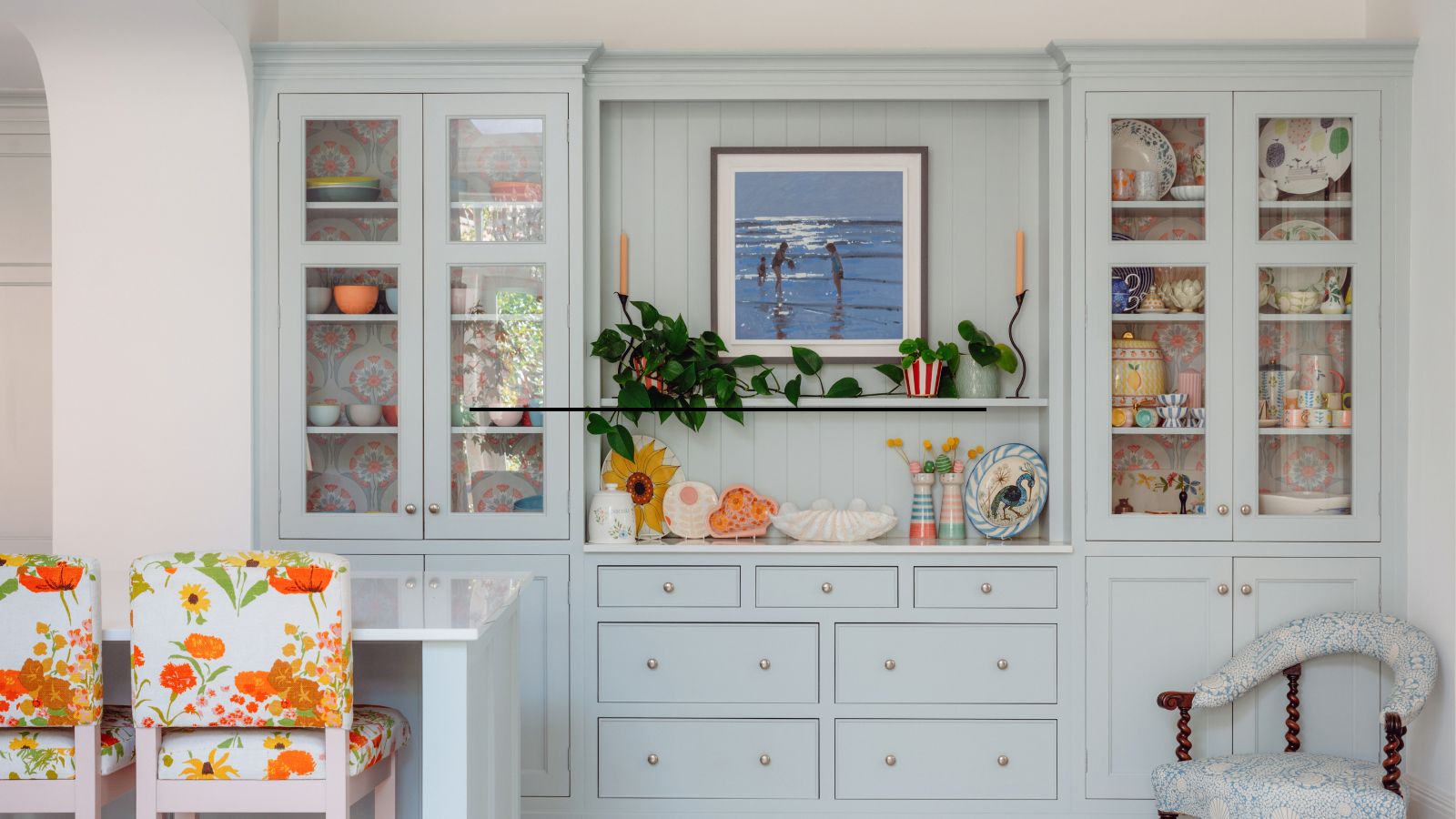 Designers say these are the 10 kitchen cabinet details to know about if you want to elevate your space
Designers say these are the 10 kitchen cabinet details to know about if you want to elevate your spaceIt's all in the details – the designer touches that make all the difference to your kitchen cabinets
By Karen Darlow Published